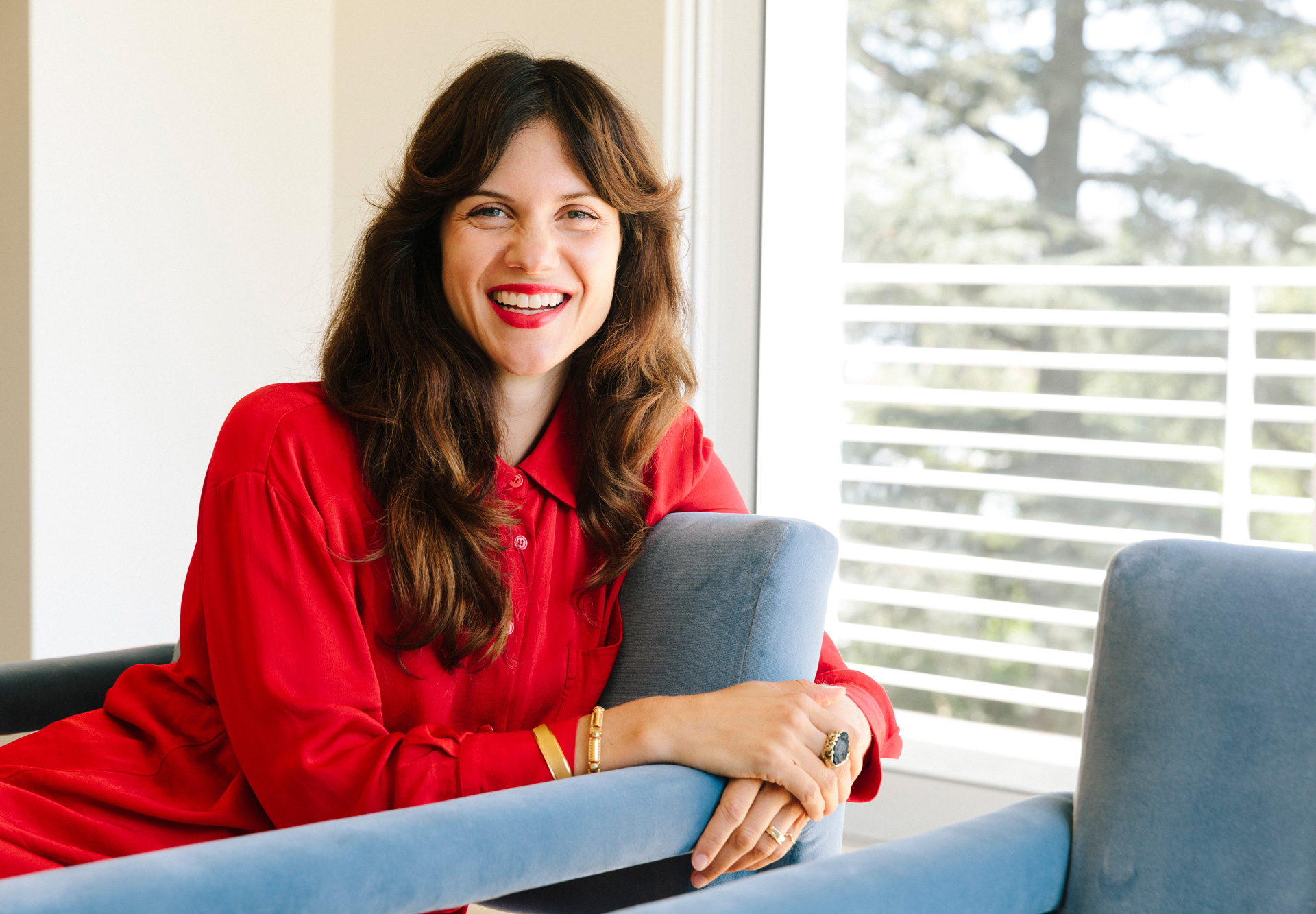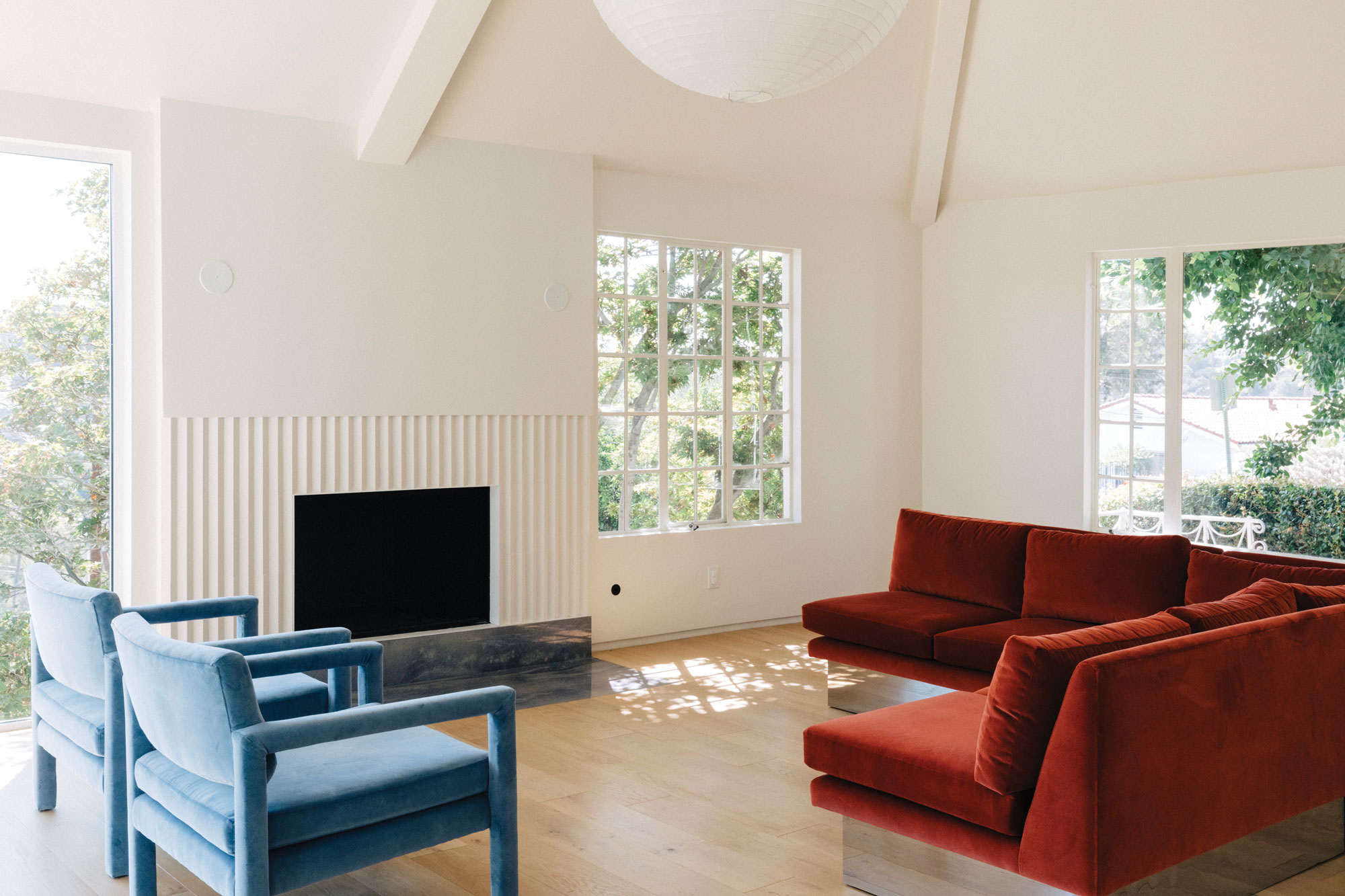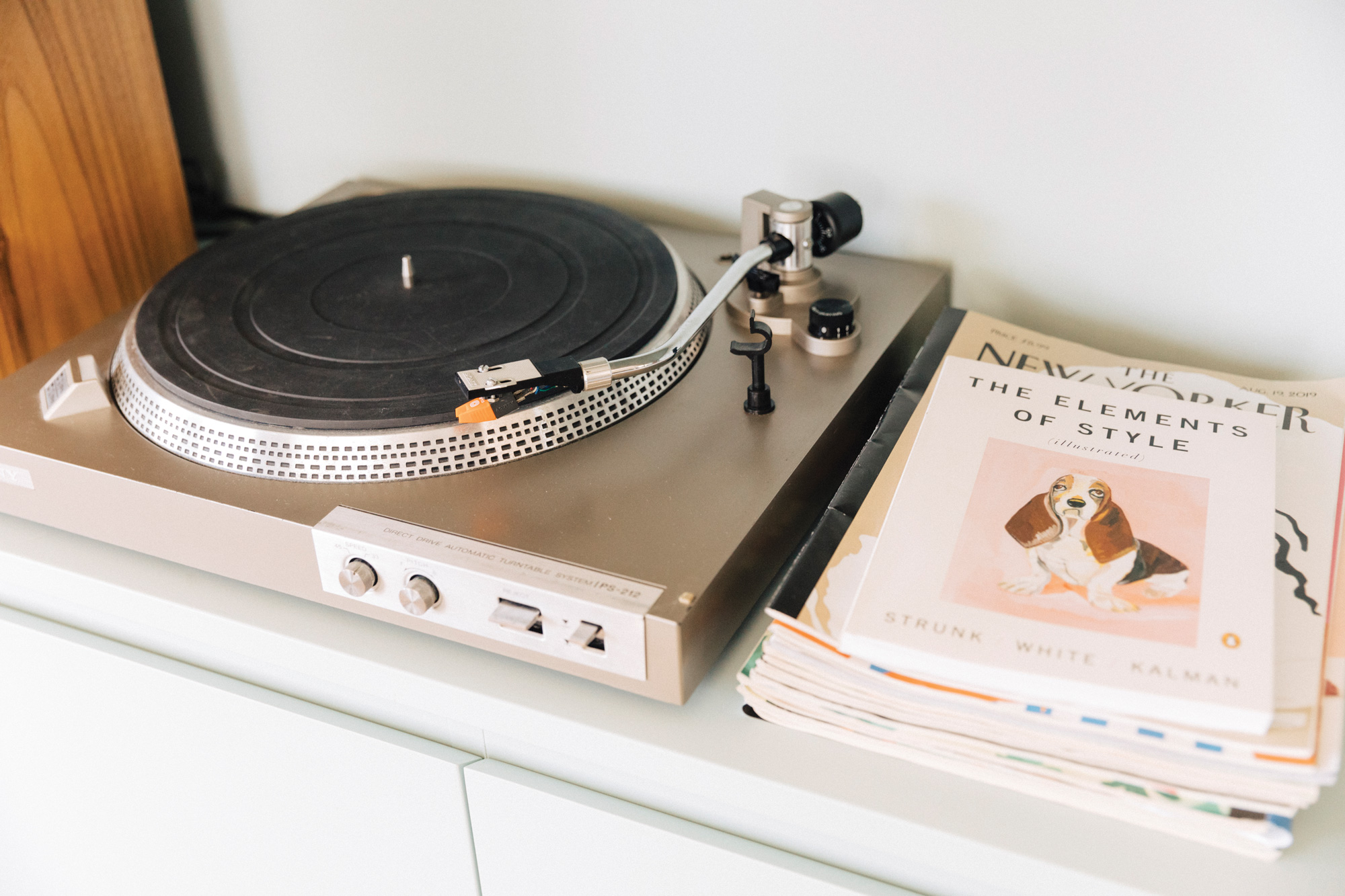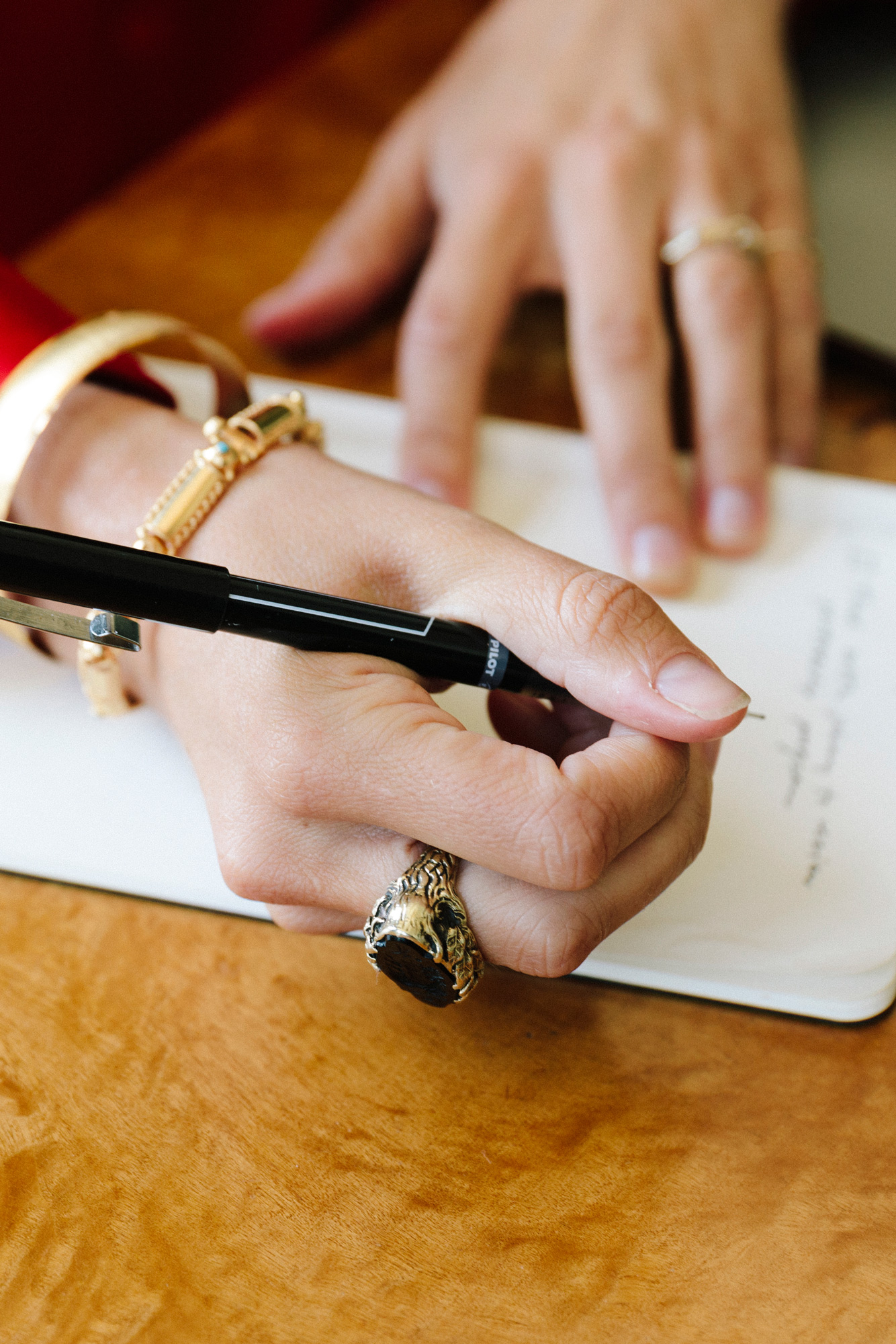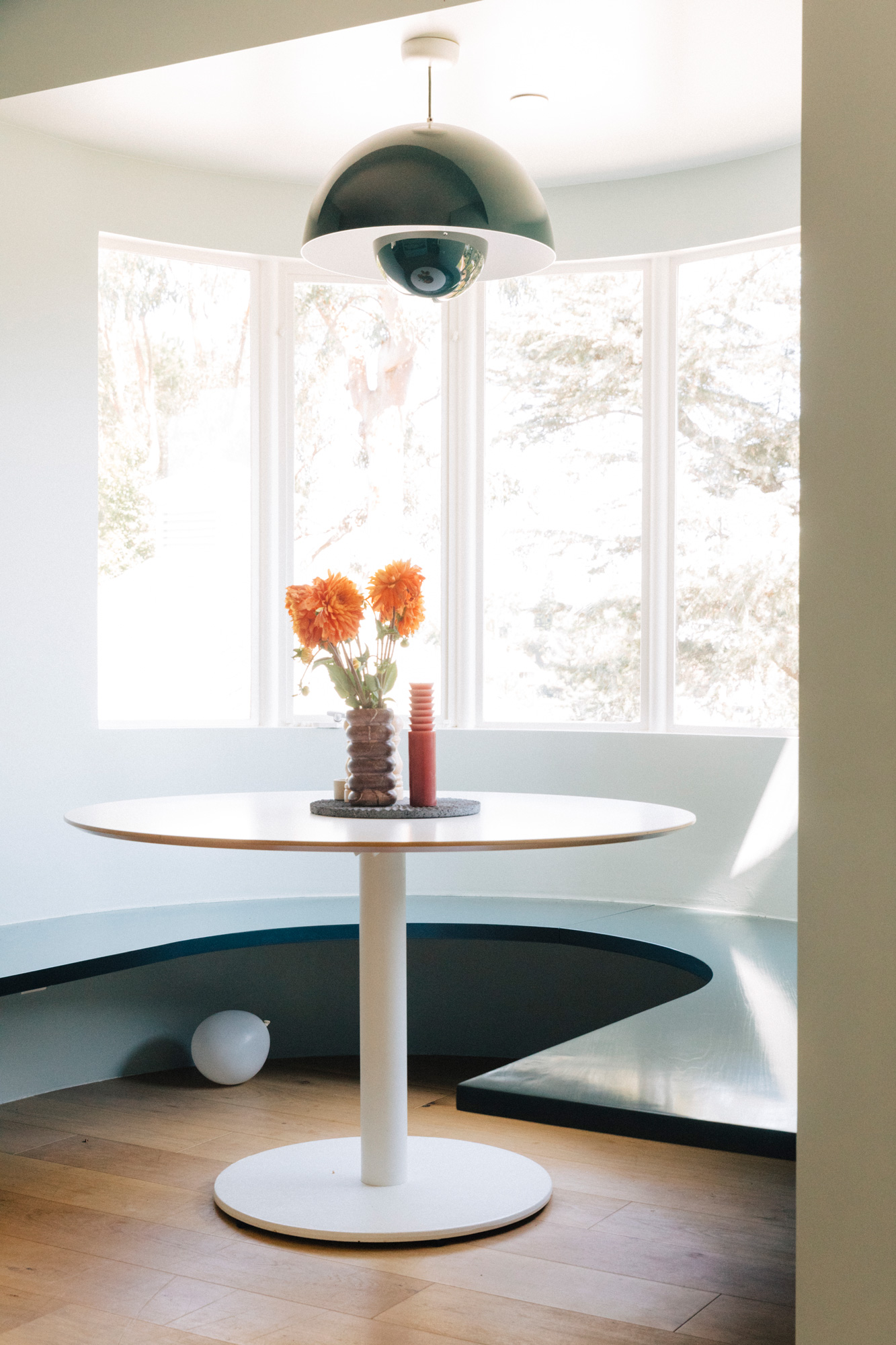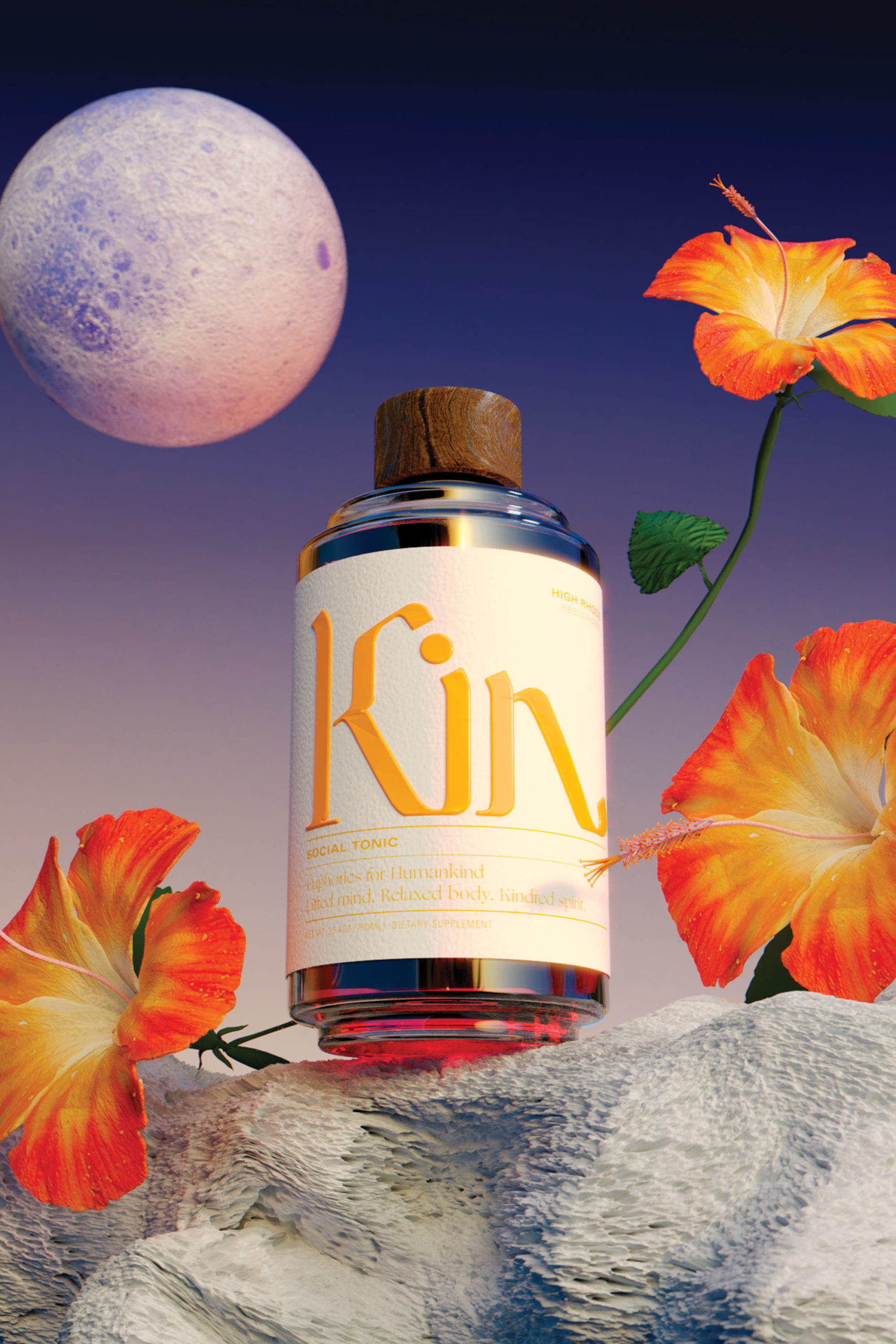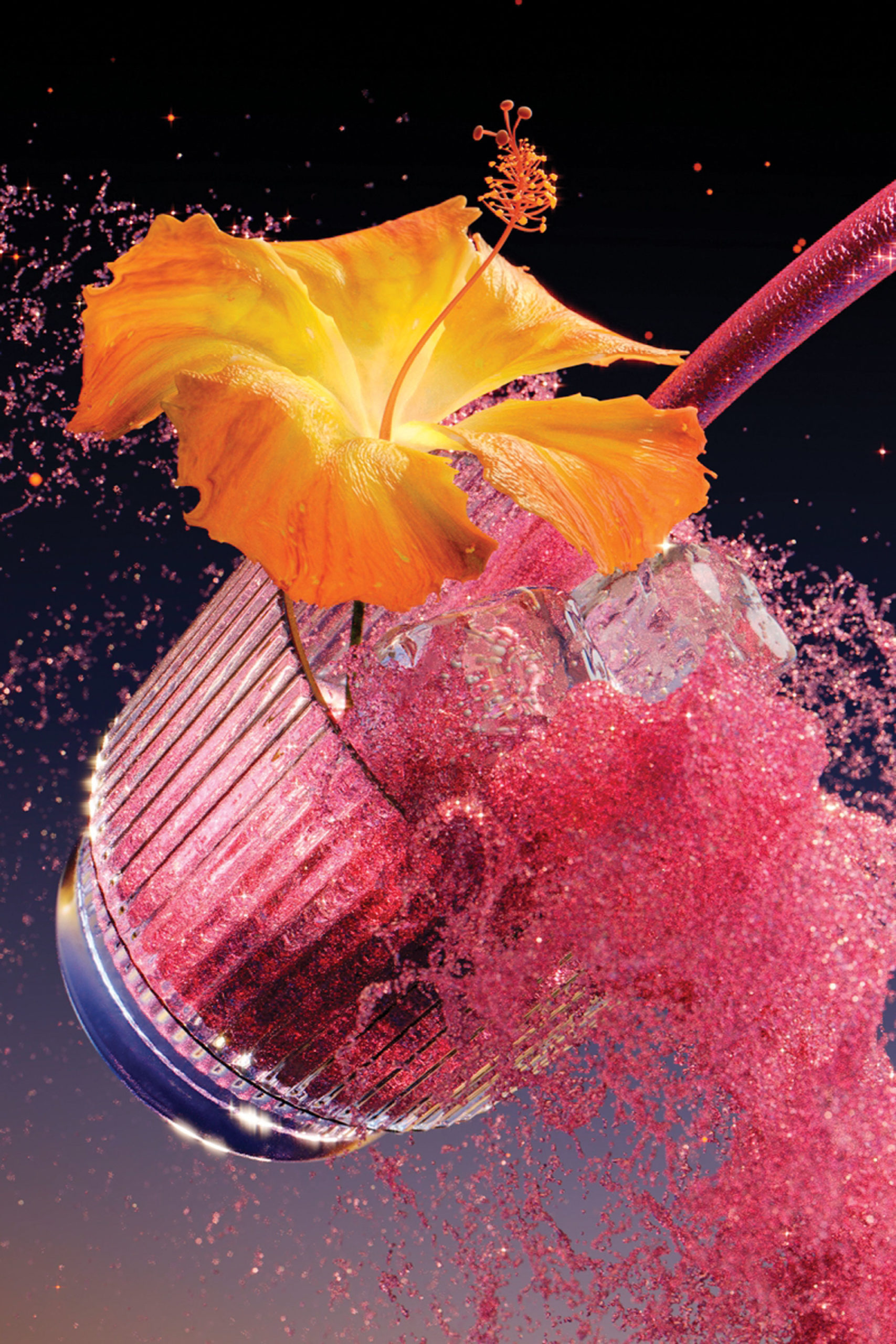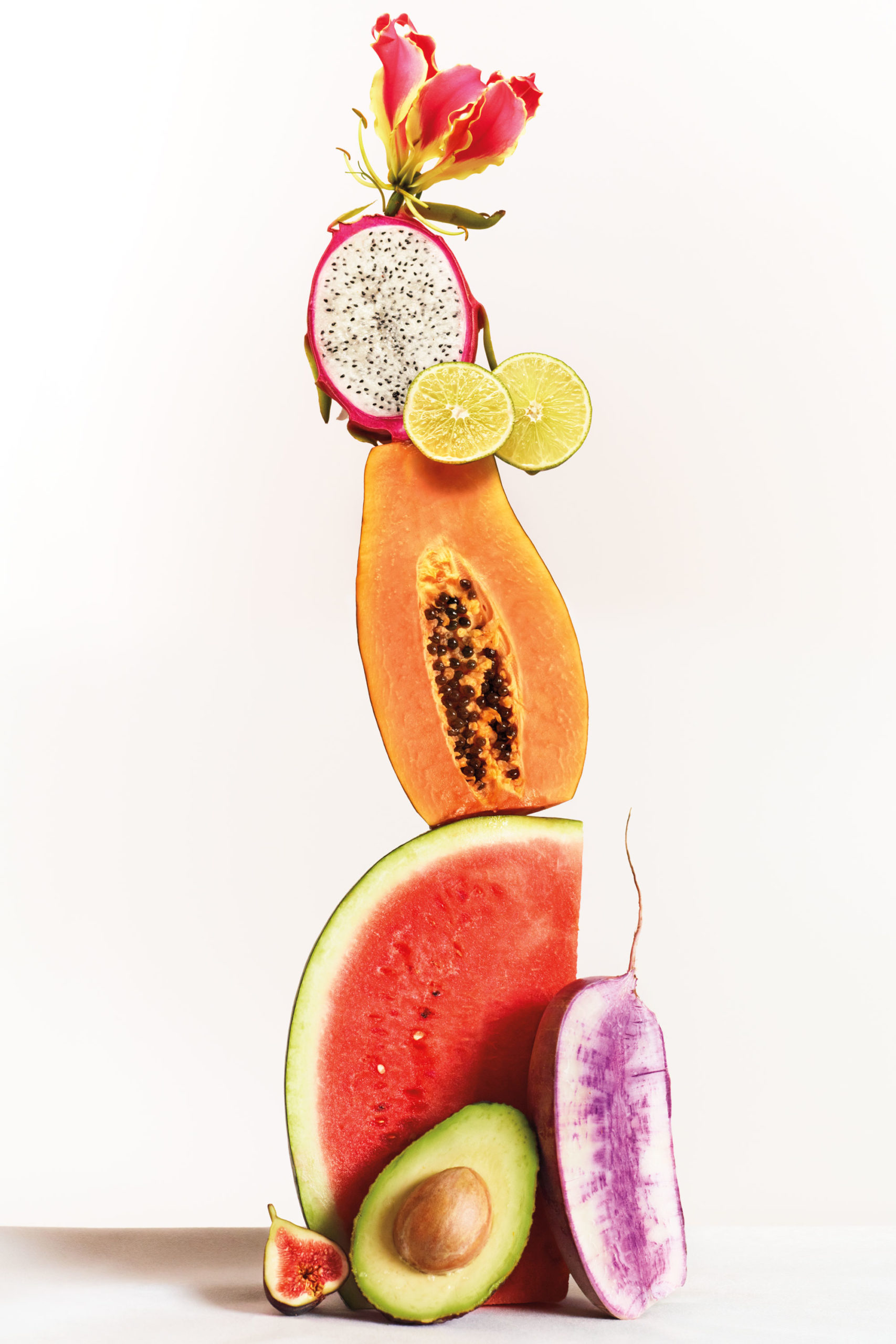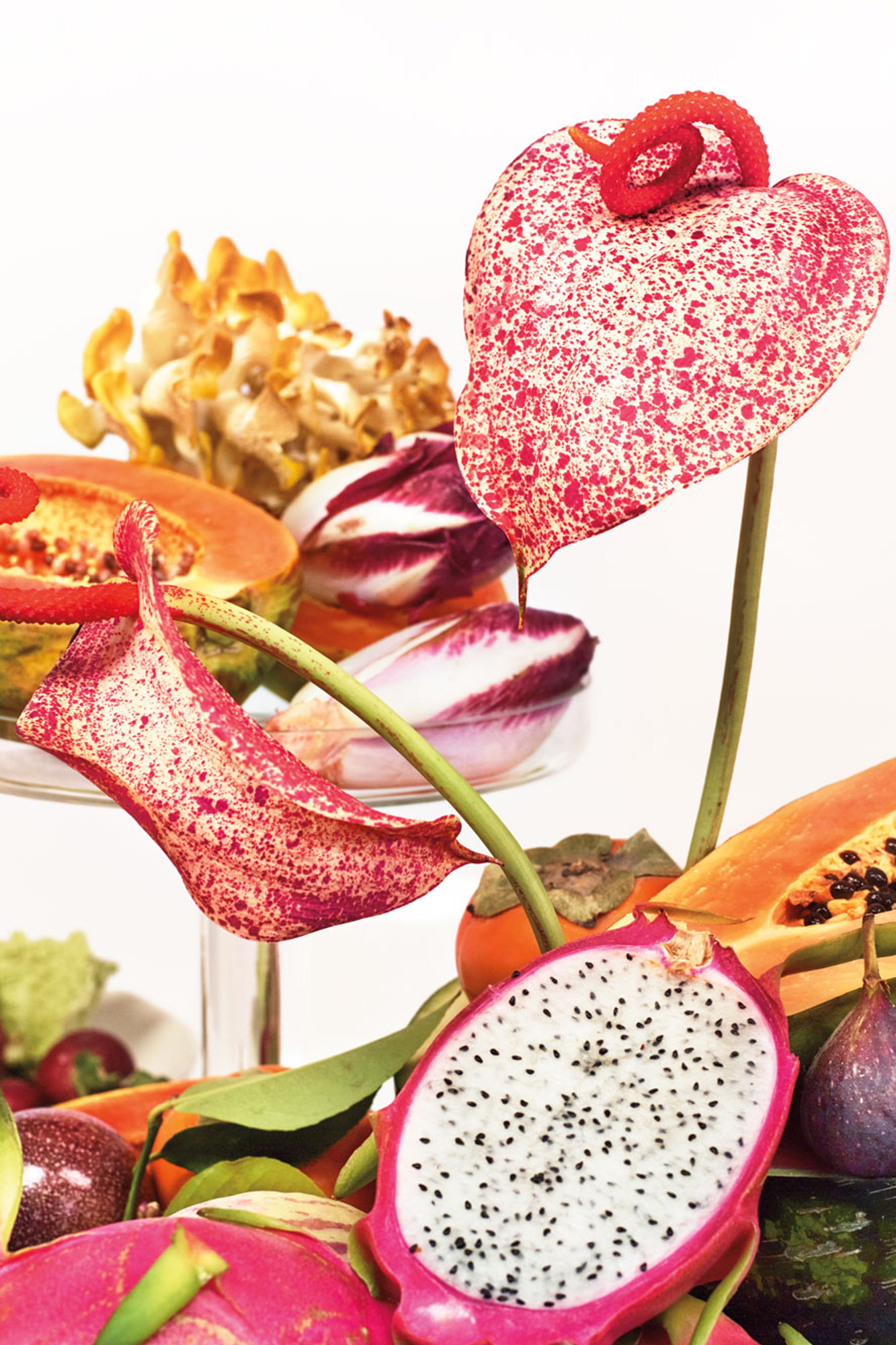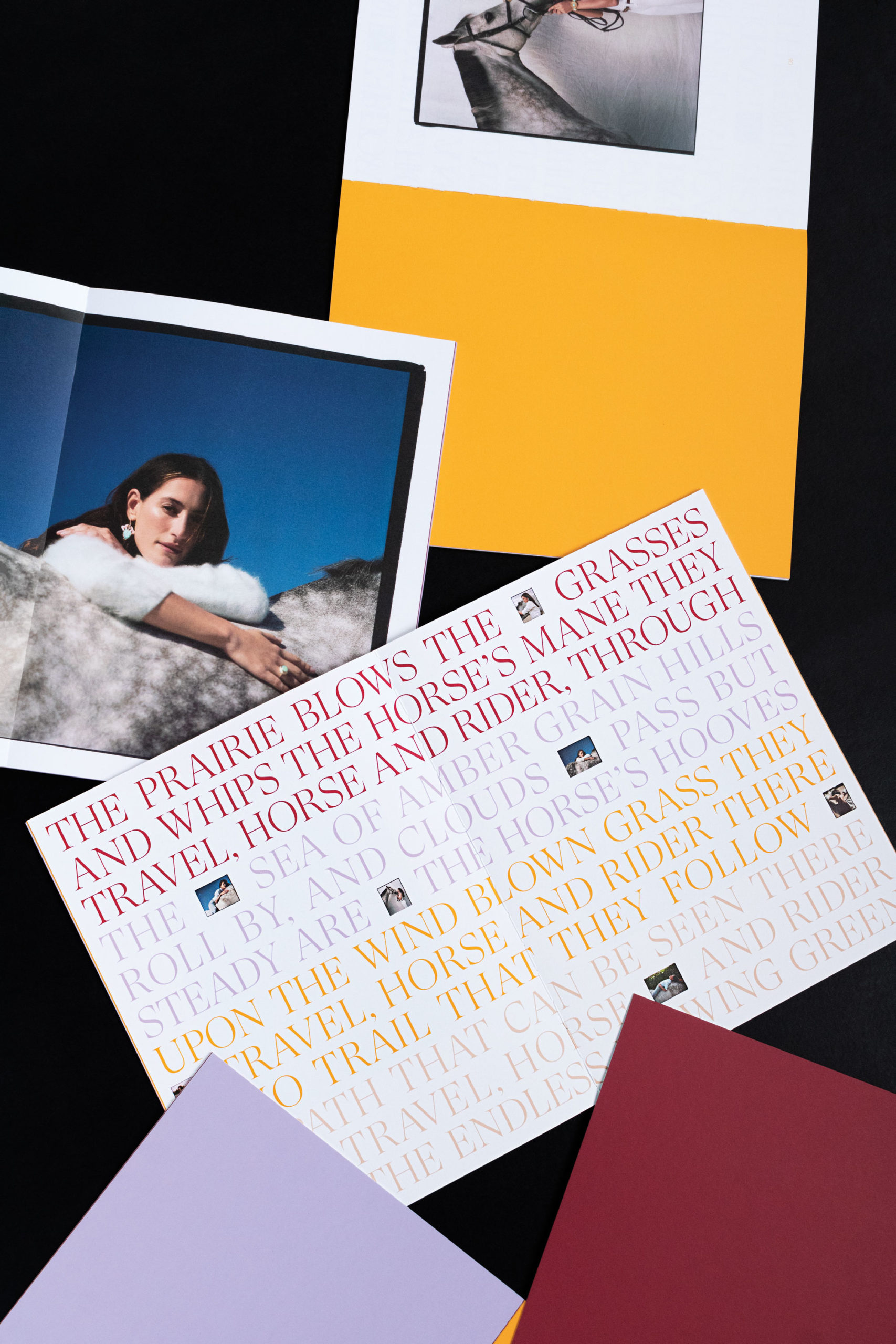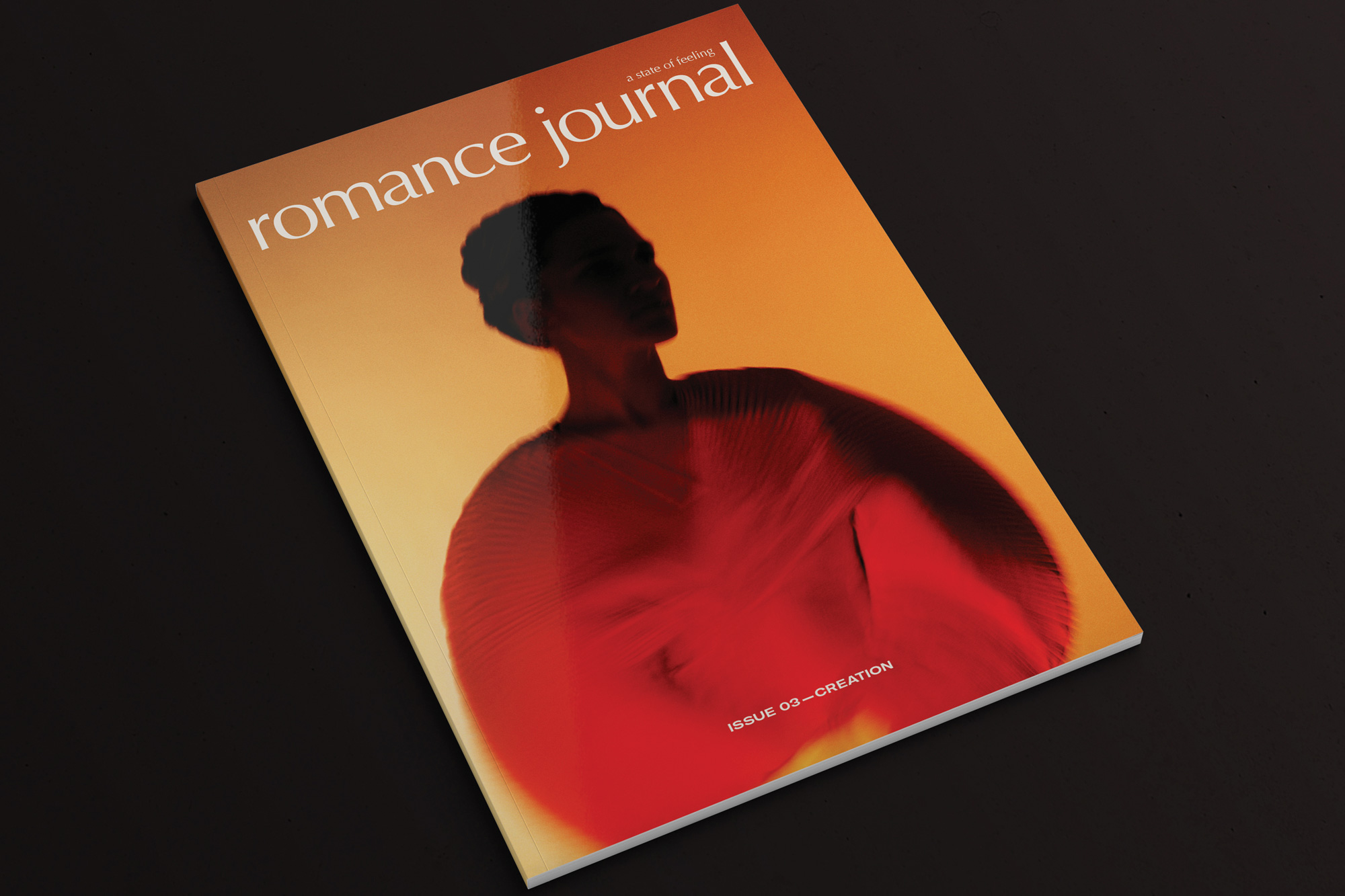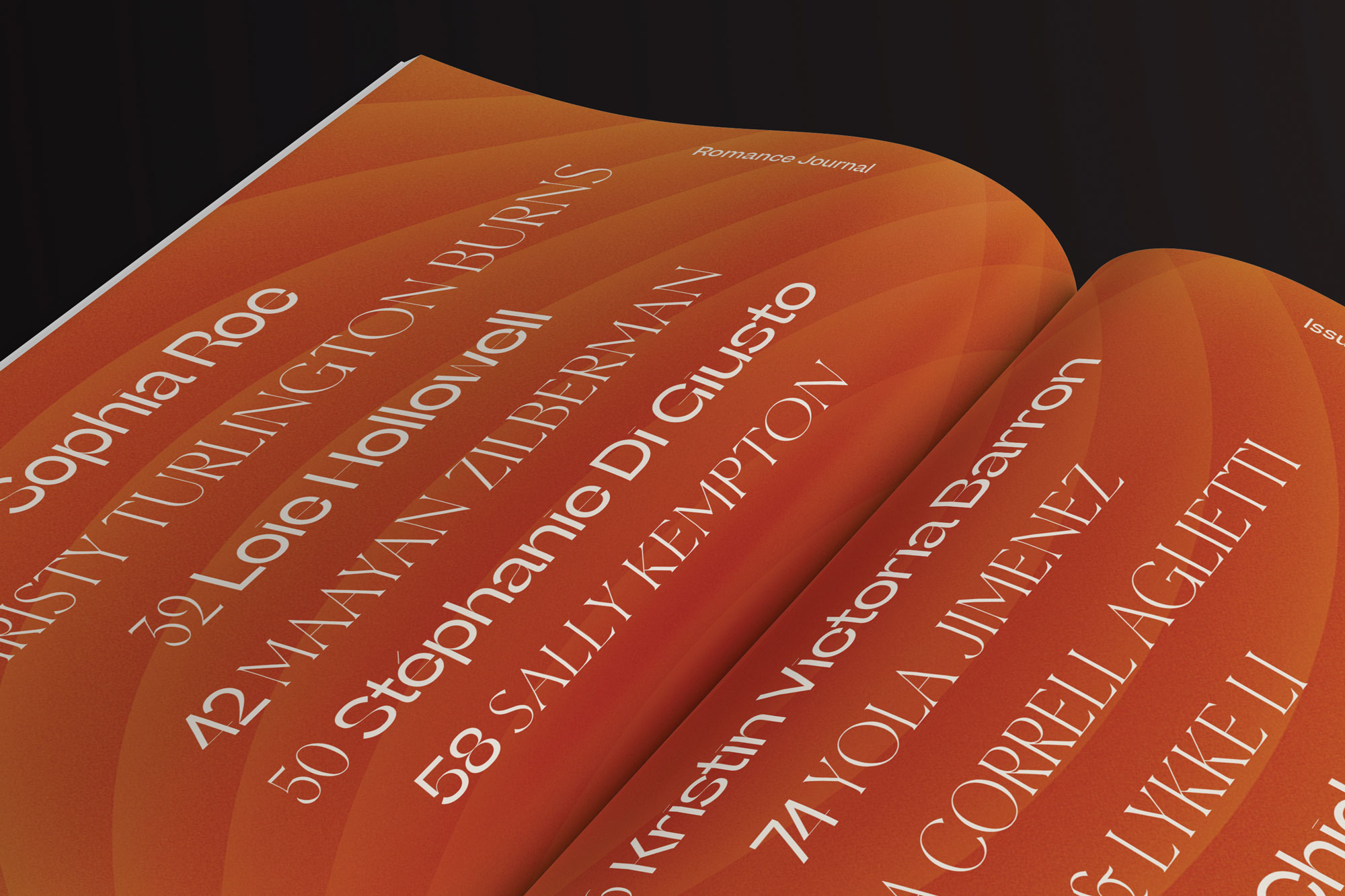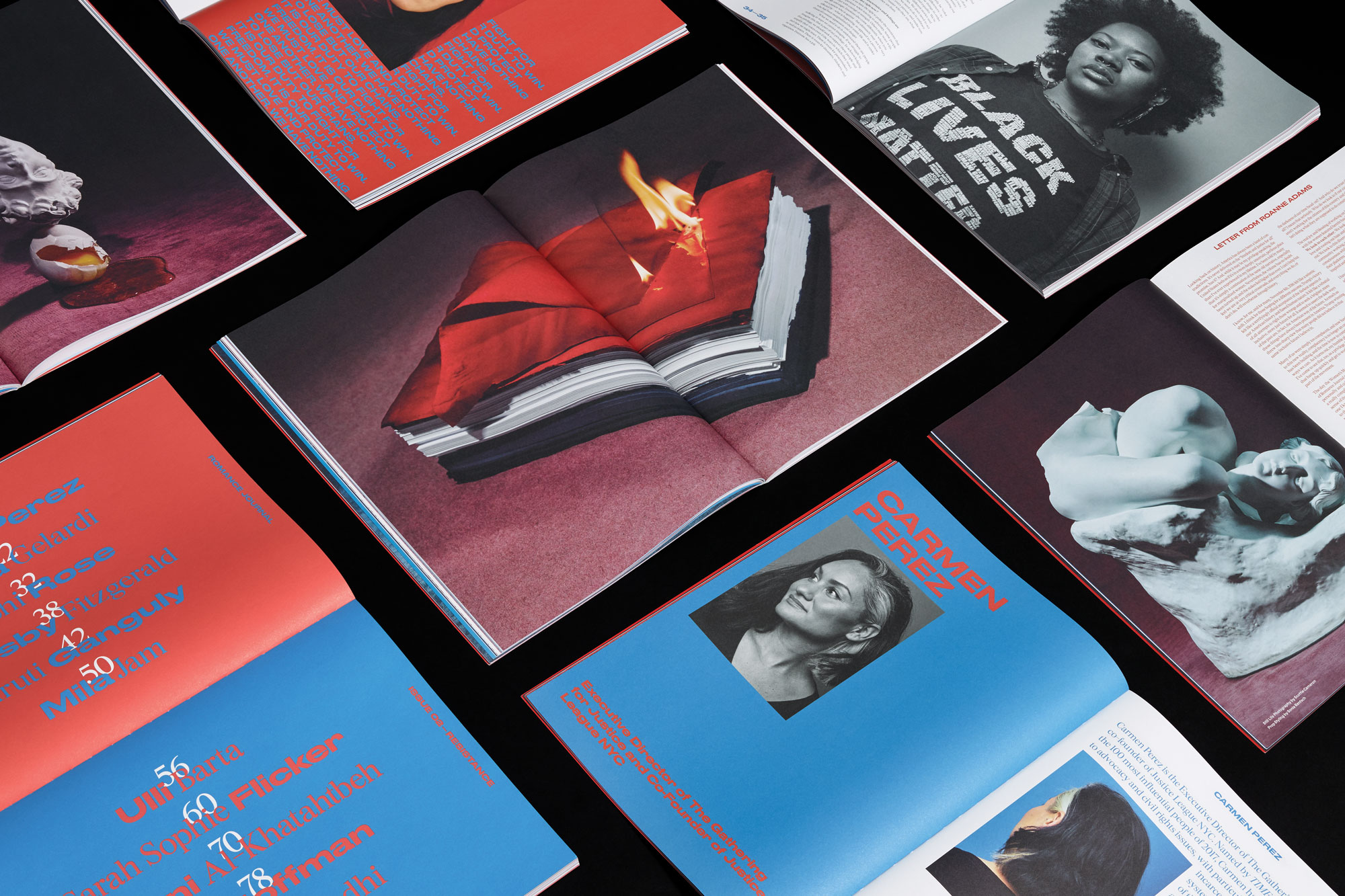Silver Lake is full of chic homes owned by chic people, but few in LA can claim a vista like Roanne Adams’ on the Silver Lake reservoir. Inside, I felt like I was in one of Roanne’s Instagram posts—neat and deliberate—but among her many to-do lists and the scattered kids’ toys I realized her home is even better. It’s authentic, just like her work.
Roanne founded her branding studio, RoAndCo, in 2006. On a practical level, the business builds brands, websites, and campaigns. Roanne’s integrated approach to branding comes from a candid desire to spark connection, to challenge audiences. With RoAndCo designs, her goal is not just for consumers to buy her clients’ products. Rather, she wants audiences to be stirred by RoAndCo designs—an impossible feat without sincere creative energy at its root. And after 10 years of RoAndCo, she still craved an untainted artistic pursuit unencumbered by clients’ and audiences’ wills. So she created Romance Journal, a high-concept “thought experiment” inspired by the fashion glossies of her youth, just with zero ads or monetary agenda.
Roanne is bicoastal, having recently relocated her family to Los Angeles while her business remains in New York. I sat down with her at her Silver Lake residence—complete with panoramic views of the stylish ’hood’s massive reservoir—where she spoke with inviting ease on creative jumpstarts, branding as storytelling, and the thrill of working with passionate people.
- Roanne says living in LA gives her the time and space to slow down and be creative. Inside her home, white walls are sparsely decorated, allowing the spectacular view to speak for itself. Vivid reds and pinks accent the space, as they do her design work. Photo by Liz Kuball
- New Yorkers are stacked neatly next to her record player, and the decor is simple, neat, and clean. Photo by Liz Kuball
- Roanne’s home feels authentically lived in. Photo by Liz Kuball
- The decor is simple, neat, clean, and deliberate. Photo by Liz Kuball
Welcome to Los Angeles! When did you make the move out here?
I’ve been back and forth between New York and L.A. for the past three-and-a-half years. My husband and I wanted to make the move around four years ago, and we started coming out here and exploring neighborhoods and thinking about the idea of living this bicoastal life. Then I started having clients to meet out here, and eventually we found our neighborhood and our house and our community and decided to be more here than there. But I’m still in New York once a month.
In the first two years of back and forth, it was three weeks in New York, three weeks in L.A., all year long. Now it’s sort of the reverse—we’re more in L.A. My daughter is in school here.
It sounds like, at a certain point, it just made more sense to be out here.
Yeah, and it’s also about a lifestyle. I wanted to be somewhere where I really had time and space to think creatively and think more big-picture. I found after living in New York City for 20 years, the day to day was very compressed into meetings-meetings-meetings all day long. To the point that, by the end of the day, I wasn’t really able to pull back and think about the brands I’m working with, the clients I’m working with, my own brand, my own magazine—any of the things I had going on. It was this very myopic view because my day was so compressed. And in L.A., everybody has more time and space.
- RoAndCo worked with Kin on brand strategy, branding, the hero bottle design, and the art direction of the launch campaign. For the launch, they art directed animator Ada Sokol to create CGI animations. Photo courtesy of RoAndCo
- In this scene, the lapsed pour speaks to Kin as a liquid catalyst for all bliss, no booze. As Kin fills the cup, the flower begins blooming, illustrating a sparked consciousness and sense of awakening. Photo courtesy of RoAndCo
What is it about L.A. that makes you feel you have that time and space?
I don’t know what it is. It’s those in-between moments here where I can sit back and look at the view and think creatively. It’s those epiphany or creative moments people usually have in the shower—I have those all throughout the day now, because I have the time and space. There’s something about L.A. that moves slower, and it also prompts you to reprioritize and rebalance your life. When I’m in New York, I’m very go-go-go-go-go, be as productive as possible. It’s more of a doing life than a being life. I go back once a month and I do that for a week, and I’m very productive. Then I come back to L.A. and I’m back in my bigger-picture creative mind.
It sounds like since you’ve made that shift, you’ve had a creative jumpstart.
I think so. I think it’s that I’m also able to replenish my energy in a way that I wasn’t able to before. At a certain point, I found that most New Yorkers, after 10 to 20 years of living there and having kids and running their own businesses, there’s a burnout moment that happens. That happened to me. Here, even though I had a tough day and still have to take care of my kids at the end of the day, there’s something rejuvenating that happens the next day. It might be because I’m surrounded by nature. I love, now, being able to go back to New York and expend that energy, then come back here and rejuvenate. I love that I have a balance of the two. I think if I were in New York all the time, I’d feel stressed and tired, and if I were always in L.A. I could end up feeling unproductive and not in tune with the things going on with my studio and my clients.
- For the launch of Sakara’s first out-of-home campaign in January 2019, RoAndCo created eye-catching images to cut through the post-holiday advertising. Ironically entitled “No Sacrifices,” the campaign draws on the iconography of Leonardo da Vinci’s “The Last Supper” and is paired with an artfully stacked, abstract totem of colorful produce, furthering the pro-abundance lifestyle. Photo by Catherine Servel
- The campaign was visible all over the streets of Manhattan with a billboard overlooking Bleecker Street. This highly successful campaign served as a reminder that health doesn’t need to mean making sacrifices around what we love to eat or how we spend our time. Photo by Catherine Servel
How many people do you have working for you at this point?
We’re typically around 16. That’s the creative team, the brand strategy team, and the account management team under one roof.
What’s your role within all that nowadays, on a day-to-day basis?
I’m the chief creative director. I creative direct most of the client projects. I also have a creative team that’s very senior and very capable of doing a lot of the work, whether it’s hands-on designing or art directing. I’m very much overseeing those projects. Rebecca Angus Smith is our head of brand strategy, and she does brand strategy for clients; she’s a huge pillar of the business, and she really leads the team in New York.
I’ll get involved depending on where they’re at in the life cycle of the project—if it’s a new client, or an LA-based client, or it’s a big campaign. But especially when it’s a client we’ve had for a while, or they have a great relationship with the art director, then I can back off and be a bit less hands-on. I’m very hands-on with the RoAndCo brand itself and Romance Journal. I also run the business alongside my managing director, so general things like operations and finances and HR management.
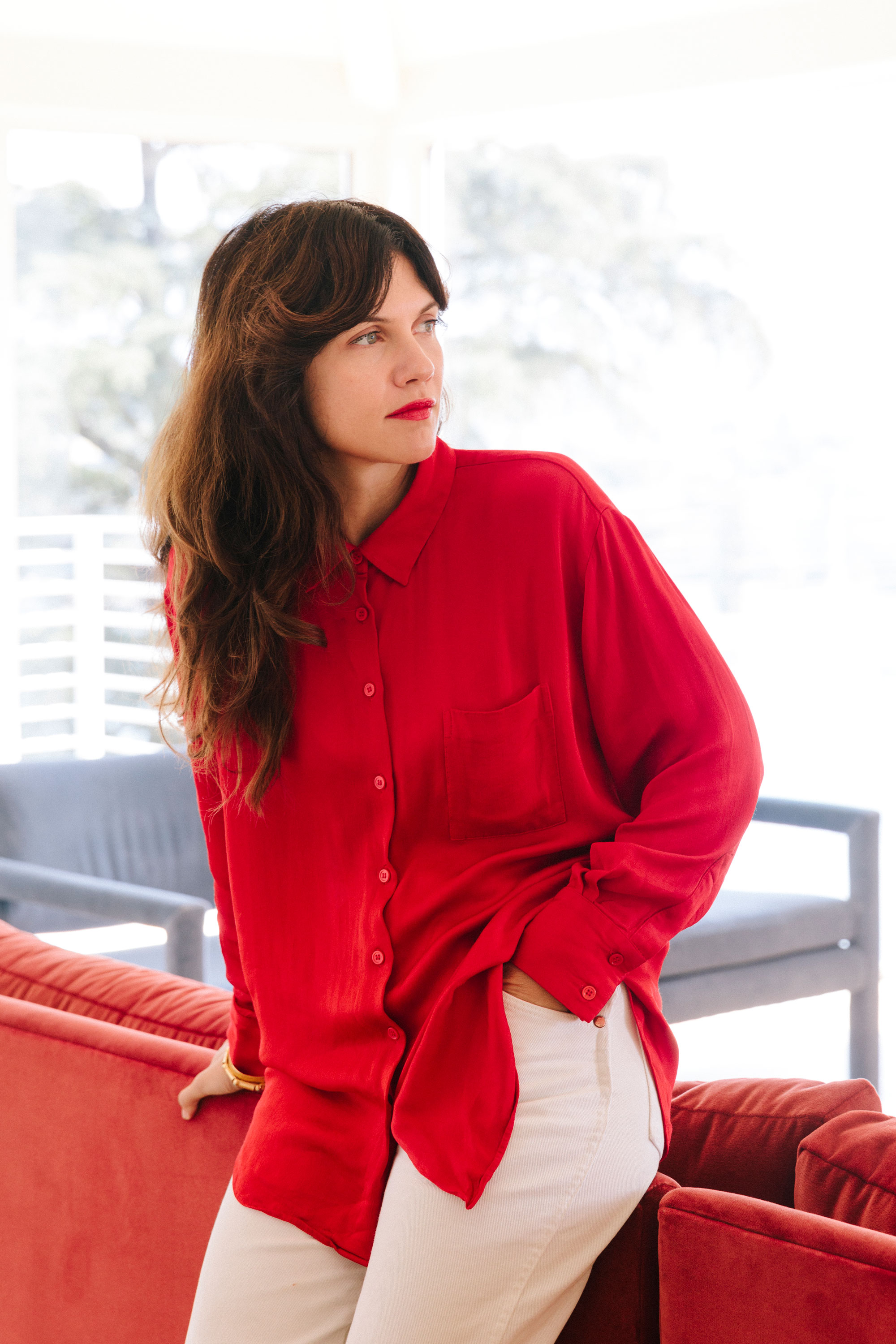
Eye-catching reds and accent Roanne’s home, design work, and wardrobe. Photo by Liz Kuball
Let’s pull back and talk big picture a bit. When it comes to design and branding, how much of what you’re doing is creative? What’s art, and what’s business?
I think a lot of it can be a creative outlet. The big creative output moments are at the beginning of building a brand: When we’re going through the brand strategy, that’s mixed with business strategy. The naming process is highly creative, and the actual branding process is highly creative. It’s coming up with this big-picture vision for a brand. We see it as beyond just creating a logo and a typeface. We see it as answering, “What is the grander vision that’s actually going to communicate your purpose to your audience?”
We truly believe brands have so much power, and we want to make sure the brands we work with are using their power in the right way. It’s creatively fulfilling for us to work with them to find ways for them to do good for all—not just for their bottom line. Knowing we’re not just making cool-looking brands that have a high, yet approachable aesthetic, but creating brands that are also speaking to their audience with their values they believe in authentically. That they’re thinking about how to make things better, like, what’s our carbon footprint? How are we treating our employees? What are our hiring processes like? Making sure there’s good progress happening in those companies, not just, “Let’s make sure we can sell these beauty products.”
Why do you think brands go to you, specifically? What do you do that other branding firms don’t, or perhaps they just don’t do as well?
There are other studios who have similar offerings, but I think there are a few reasons why brands come to us. First, we’re female-led, male supported. The brands who come to us want to work with us because we are mostly female identifying and we represent a range of ages and cultures. We understand what a 20-something-year-old customer is looking for as well as a 45-year-old.
We’re very versatile. We work with a range of clients, big and small, from Google to independent fashion brands. Early on we started working with fashion brands and cultivated a design aesthetic that was artful, fashionable, and approachable. When the tech boom happened in New York, start-ups were looking for that fashion aesthetic with approachable sensibility. Even if their brand was selling wellness or interior design services, they wanted their brand to look distinct and stand out; they would tell us they specifically didn’t want to look like a tech start-up and that was why they were coming to us.
We’ve always been known for a high standard of design and art direction, and in the past few years we’ve been becoming more and more known for our strength in brand strategy and writing. We’ve combined these services to help build brands from the ground up and clearly tell their distinct story.
You’ve said branding is like storytelling. When you have that first sit-down with a new client, how much are they coming to you asking for you to write their story, and how much are they saying, “Here’s our story, we want you to communicate XYZ?”
It’s fifty-fifty. Some brands come to us with a great product or service and haven’t considered their brand story. Some clients come with an amazing story but haven’t articulated the story to the customer yet. Often with new brands the business might end up pivoting in the first six months. You’ll have this highly motivated, visionary founder who wants to change the world and change how people are doing things. They often have several stories they want to tell, and so we help pull together the strongest story that both connects emotionally and delivers a real benefit to their customer. When they haven’t quite figured out their tech product yet, that’s when we’re like, “OK, let’s focus on creating the story and pinpoint the emotion because the tech could shift at any moment.” I like to ask our clients questions like, “Do you want to think about your business as something that will get sold in five years, or something that could live for 40? If we think big picture, what’s the story you want to tell 40 years from now about what your business did to solve a problem or change the world for the better?”
- Irene Neuwirth smythe-bound Jewelry book. Photo courtesy of RoAndCo
- RoAndCo designed this beautiful book for Irene Neuwirth Jewelry. Photo courtesy of RoAndCo
On an operational level, what does it look like for you to work with a small company or designer versus a Nike or a Google?
What’s amazing about working with a designer, like an Ulla Johnson or a Loeffler Randall or an Irene Neuwirth, is working directly with a creator. They’re thinking all day long about the next shoe they’re going to design or their next collection, and all their design influences and art influences and photography influences are all in line with mine. There’s a spark there to build from. They’re inspiring me, I’m inspiring them, and there’s this beautiful creative partnership. Working with a Google-sized company, you’re working with the marketing or design teams within those business, and there’s less of a heart-to-heart. It’s about tapping into their audience and their customers and what they want to see. Versus, when you get into the mindspace of the creator, then you absolutely create something special for them, and then the audience comes.
Do you have favorite kinds of clients to work for?
I love working with creatives. The folks who have chartered their own paths. They’ve listened to their gut the whole way; they know what they want. If we’ve written copy for them, they know intrinsically what sounds right. They don’t have to get approval from their boss’s boss’s boss. There’s a difference, too, between uncreative founders who are creating tech brands or new businesses. They’re exciting to work with, too, but their in-house creative lead usually isn’t a founder. At the end of the day, I enjoy working with all kinds of brands because they all teach me so much about how branding is so important.
Why do you think branding is so important?
We live in a world that’s fighting for everyone’s attention. At the end of the day, the way to get attention is to meaningfully craft a brand across all different touchpoints in a holistic way. Even if the brand is an un-brand—it doesn’t have a logo—it has to communicate to that customer what its purpose is.
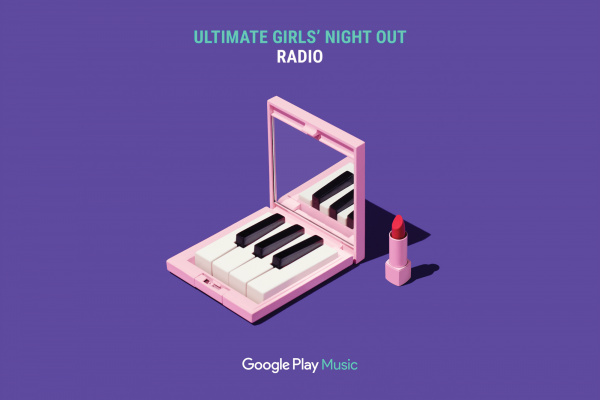
To differentiate Google Play Music within the streaming landscape, RoAndCo developed a campaign that merges everyday objects into surreal settings, resulting in playfully evocative still-life compositions for each radio station. In collaboration with photographer Andrew B. Myers, RoAndCo art-directed images to represent radio stations like “Ultimate Girls’ Night Out” and “Jazz for Working.” These images became the hero of the campaign across both digital and print, with multiple placements in magazines like Rolling Stone. Photo courtesy of RoAndCo
It’s a big, daunting question, I know. “Why is it that what you do with your life is important?”
Right. What I want to do, in my heart, is help elevate peoples’ consciousness. The way they’re thinking about themselves, their lives, their purpose on the planet. I have this greater desire to help people feel more in touch with their own creative abilities and with their own essence. There’s two levels to what I do: I can create a brand with my amazing, talented team, but I also truly want to help people realize their creative potential. Whether that’s a founder or the graphic designer who’s working on the project, I think everyone should have a seat at the table. Maybe that comes from being a female creative director in an industry that doesn’t have a lot of females in it. I’ve never felt comfortable in a situation where I don’t feel heard, so I always want people to feel comfortable harnessing their creative selves. That’s why I started the magazine. Well, Romance Journal isn’t really a magazine, it’s more of a thought-starter for people to think deeply about their consciousness and what they’re capable of. Especially when we’re given the privilege to pursue creative paths.
How did Romance Journal come about?
I always wanted to have a magazine. Early on, when I was at Parson’s, I thought I’d end up working at a fashion magazine. I love tactile print. I love magazines. I grew up obsessing over fashion and art direction and design, and I realized, “I could be the art director of a magazine.” But I quickly realized, as I was graduating, that working at a magazine wasn’t going to make me the kind of money I needed to live the lifestyle I wanted in New York City. I ended up working at a big branding agency, but I always wanted to art direct a photo shoot of someone I admire, to sit down and interview them. I wanted to know the fabric of a city by knowing all these interesting people doing amazing things.
So 10 years into RoAndCo, as a gift to myself and the company for lasting 10 years, I gave myself a magazine that wouldn’t be based on selling products or clothes. It’d be about elevating our consciousness and feeling into our emotions and the ways we are guided by our intuition. The things that are intangible, that you can’t see. The first issue was about emotion. I spoke with women who are admirable to me, and we talked about how emotions played into their career choices and their life choices, how they use emotions on a daily basis, how they make their way into art and music. The second issue was about resistance, as a response to activism and Trump getting elected and the world flipping on its head. The third issue will be coming out in October, and it’s about creation. It’s about peoples’ creative abilities, but it’s about the feminine version of creation: our intrinsic abilities to create. We’re intrinsically capable of creating humans, and creating art and civilization and humanity, all these things we’ve been told throughout history we can’t create.
I’m very proud of Romance Journal. On this third issue, we were so lucky to have Gucci collaborate with us. I’ve always wanted to work with Gucci, and that they wanted to work with us on my passion project was a dream. We collaborated on everything from Gucci visuals inspired by the idea of creation, goddesses, and goddess worship to what clothes to shoot the women in. It’s amazing to get that validation for a small creative project.
- The first issue of Romance Journal explores the role of emotion in life and work through the lens of the most compelling and professionally successful creative women today. The second issue features a curation of female identifying activists, entrepreneurs, and artists leading the resistance movement. The third issue of Romance Journal launched this fall in collaboration with Gucci. Photo courtesy of RoAndCo
- Typography is an essential part of Romance Journal, which contrasts condensed serifs with bold sans serifs. Photo courtesy of RoAndCo
- Romance Journal. Photo courtesy of RoAndCo
It sounds like, before Romance Journal, you’d been craving a more creative outlet.
Exactly. Craving a creative output that’s completely initiated by me, and not by a client. There’s only so much of yourself that you can consistently put into those brands without getting burned out because, at the end of the day, they’re not your brand. You’re a huge part of building that brand, but it’s not yours. I realized, I have this amazing team, I have the infrastructure, I have a platform: I’m going to do this for the business and for myself. And that feels really good.
What’s something RoAndCo has worked on that you’re particularly proud of?
People always ask me this question, but I’m proud of all the projects we work on. This past year, we created a campaign for MAC cosmetics for the 25th anniversary of their Viva Glam lipstick, where 100% of the proceeds go back to AIDS funding and research. I’m particularly proud that my team was able to create this incredible campaign with an amazing director, Bardia Zeinali. We found these strong personalities for this brand, make them look beautiful, choreograph these beautiful videos, all for good: 100% of those dollars raised by buying this lipstick will go back into helping their communities and helping people living with HIV/AIDS. I find it very fulfilling when we’re doing something that’s good for the world, good for people, good for underserved communities.
This article originally appeared in the Fall/Winter 2019 issue of Sixtysix with the headline “Roanne Adams.” Subscribe today.
